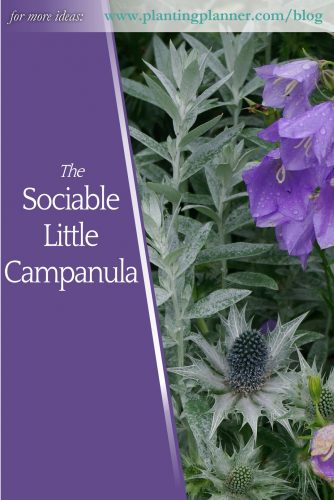from The Weatherstaff PlantingPlanner – intelligent garden design software
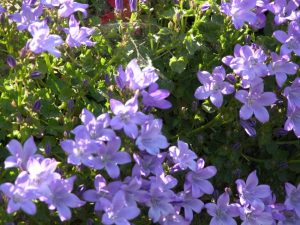
When we first began planting up our garden, my parents dug up from their own garden and donated fast ground-covering plants, like pretty blue campanula, to help cover some of the wilder areas at the top of the garden. These did the trick nicely, romping off to cover up the bare soil and could be cut back whenever we found a choicer specimen to replace it with.
We soon found though that the cheery, bell-shaped flowers seemed to get on remarkably well with whatever we chose to partner it with. It is just the perfect purple-blue to set against yellow, orange and pink, as well as making a great partner for silver and dusky or darker shades of purple. And, apart from needing to be pulled up when it threatens to scramble off into the ether, it’s an incredibly easy-going little perennial too.
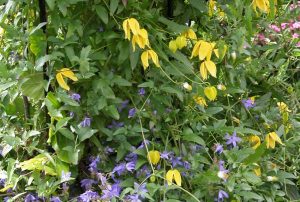
We planted a mixed green and purple beech hedge to section off the wild part at the top of the garden and set a metal archway into the hedge to lead into our ‘secret garden’. I planted this gorgeous yellow clematis to clamber up and over the arch and its perfect partnership with the spreading blue campanula at the foot of the arch was a wonderful, serendipitous combination.
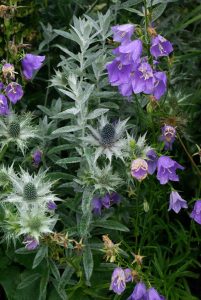
Here, the purple-blue of the bellflower adds depth to the sophisticated combination of silvery Artemisia and ghostly-white Eryngium.
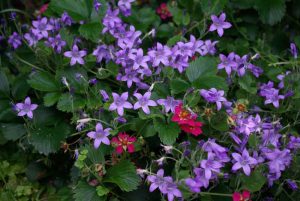
Its unassuming nature makes the campanula a good choice for a ‘wild’ area. We planted up the base of the hedge with wild and wild-ish flowers, including this luscious lipstick-pink cultivated strawberry plant.
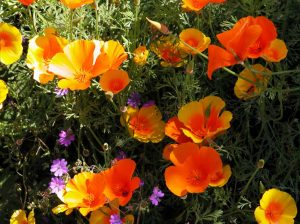
As well as providing attractive groundcover, campanula is also a really useful addition to container plantings, offering a long-flowering, easygoing display.
Pin for later
For more gardening ideas, click here to follow the Weatherstaff PlantingPlanner on Pinterest.


